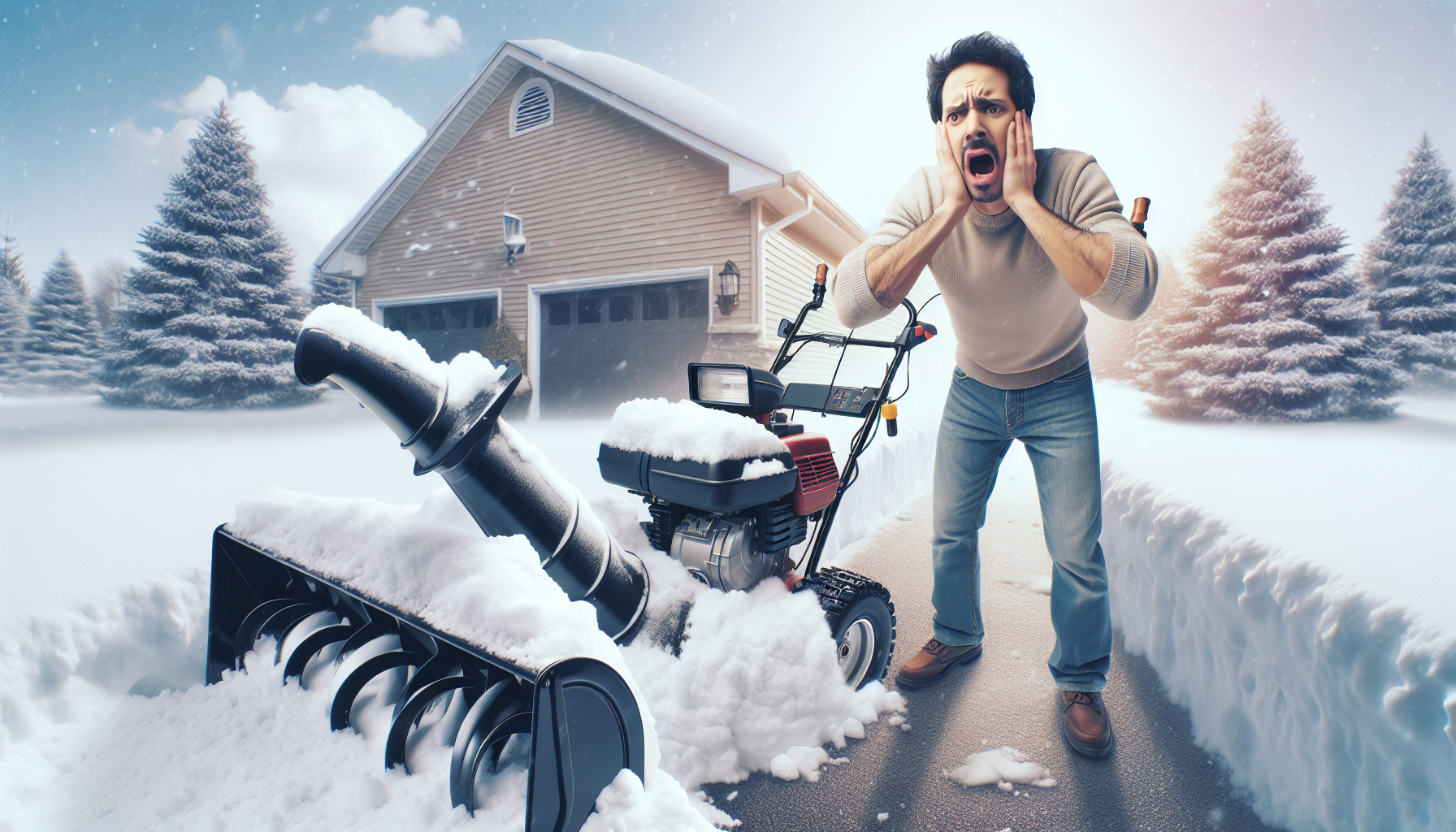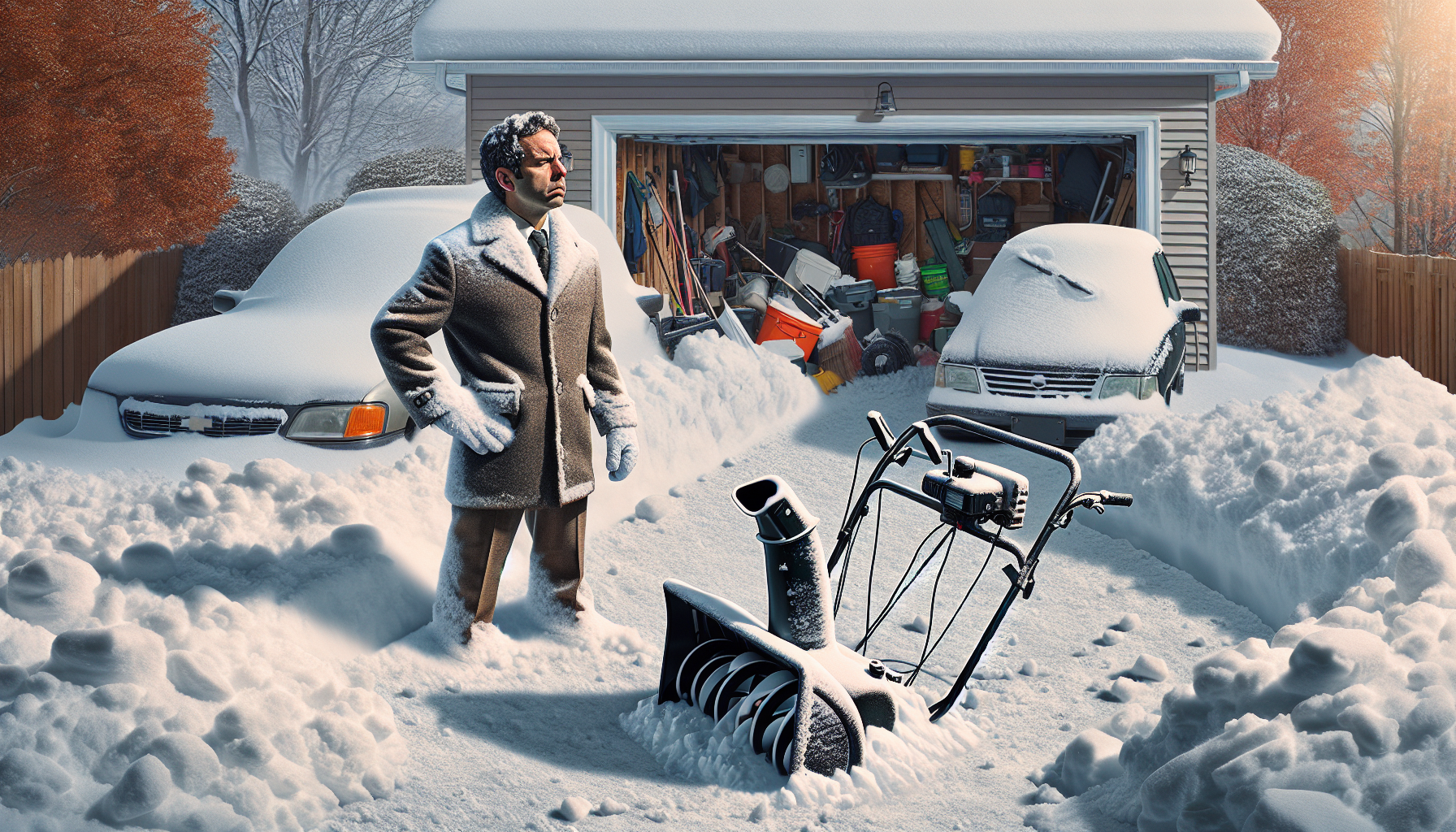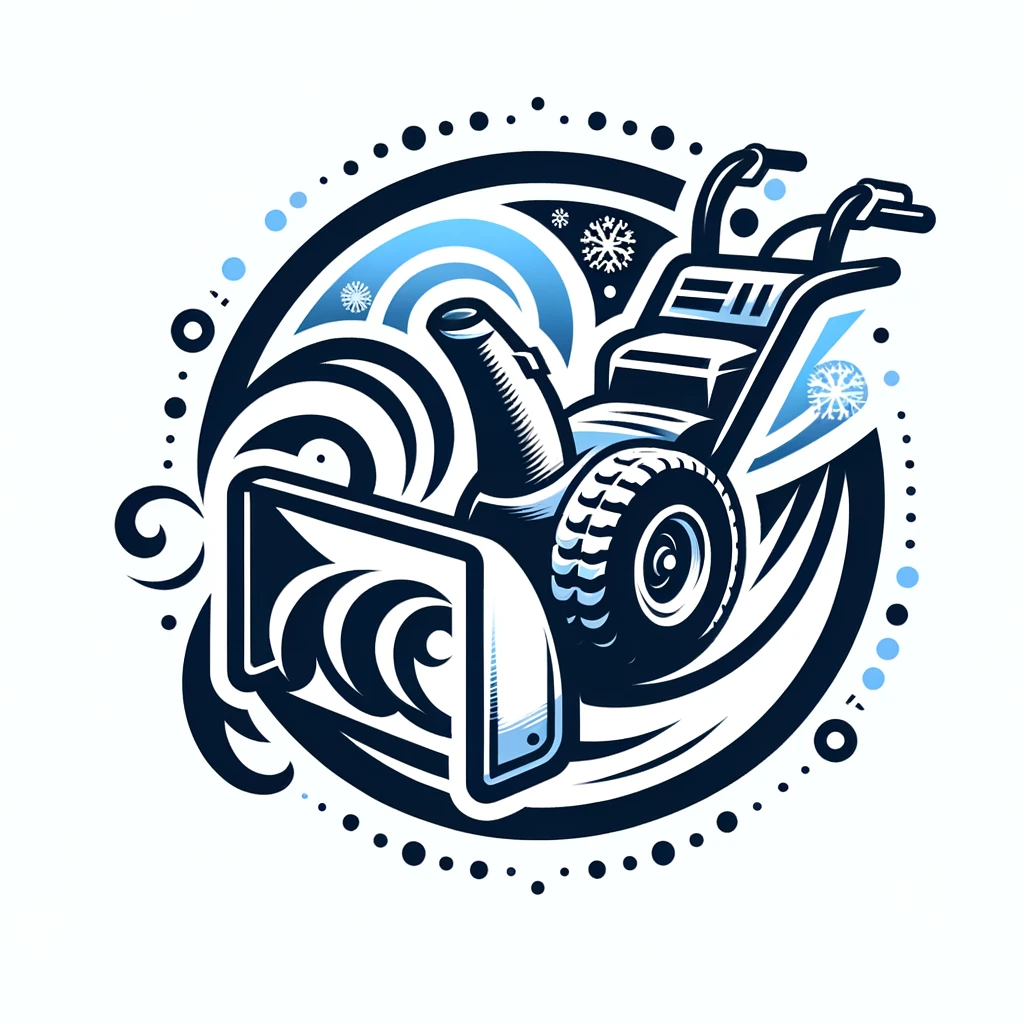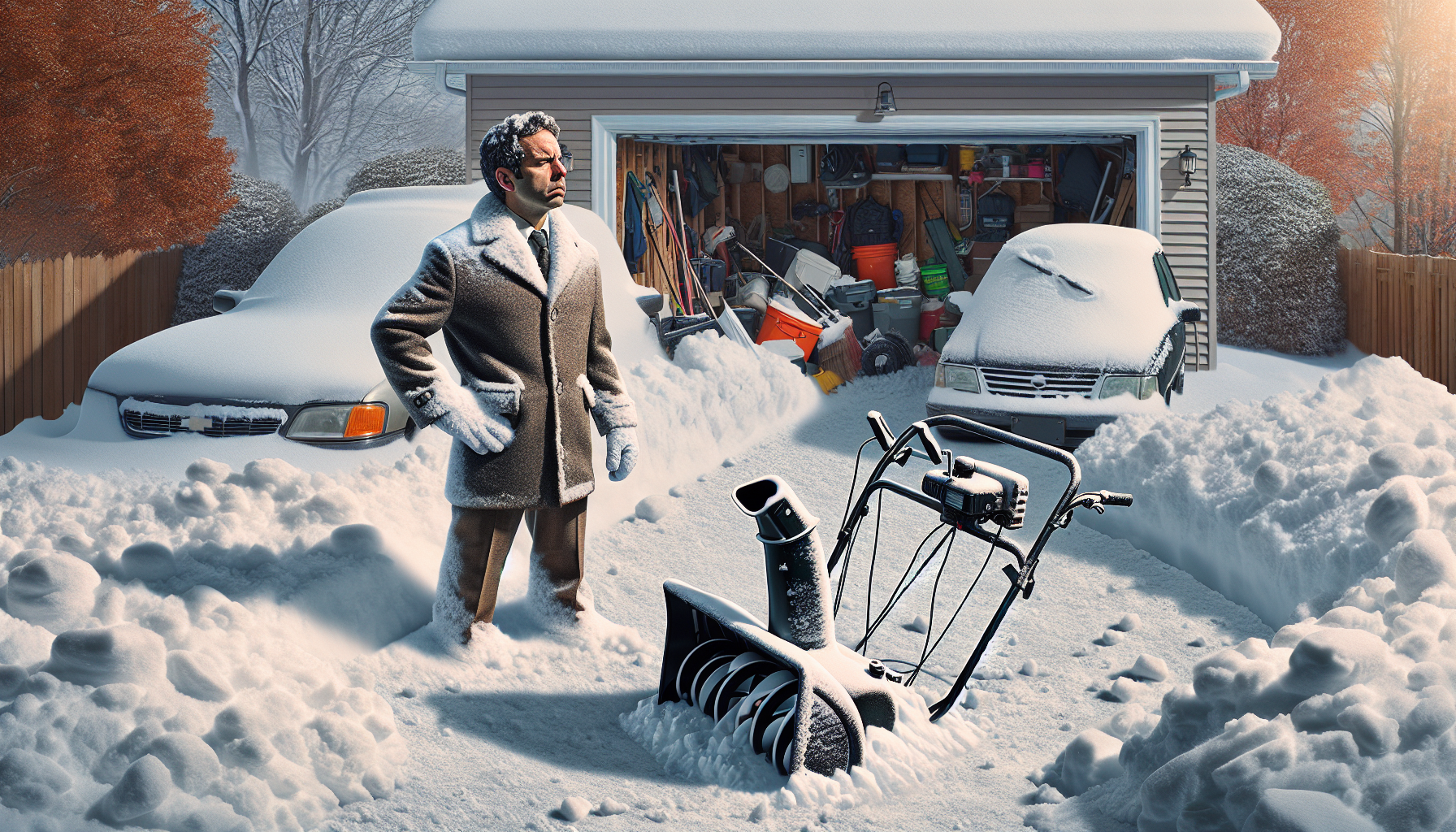Are you tired of shoveling snow and ready to invest in a snow blower to make your winter maintenance chores easier? While snow blowers can undoubtedly be a game-changer when it comes to clearing your driveway and walkways, it’s essential to consider the potential drawbacks of this popular snow-clearing tool. From the noise they generate to the environmental impact and the need for regular maintenance, understanding the downsides of a snow blower can help you make an informed decision before purchasing one. So, let’s explore the downsides of snow blowers and find out if they outweigh the convenience they offer.

Cost
Initial Investment
When considering the drawbacks of a snow blower, cost is one of the first factors to consider. Snow blowers can be quite expensive to purchase initially. Depending on the size and quality of the machine, prices can range from a few hundred dollars to several thousand dollars. This initial investment may not be feasible for everyone, especially those on a tight budget.
Maintenance and Repairs
Another cost-related drawback of snow blowers is the ongoing maintenance and repair expenses. Like any machine, snow blowers require regular maintenance to keep them running smoothly. This includes things like oil changes, spark plug replacements, and belt adjustments. Additionally, if any parts of the snow blower break or wear out, they will need to be repaired or replaced, which can add up over time.
Fuel or Energy Costs
Snow blowers, especially gas-powered ones, come with ongoing fuel costs. Gas-powered snow blowers require gasoline, which can be a significant expense, especially during periods of heavy snowfall. Alternatively, electric snow blowers require electricity to operate, which may increase your energy bill. Therefore, it’s essential to factor in these additional costs when considering the overall cost of owning and operating a snow blower.
Limited Efficiency
Dependent on Snow Conditions
One of the drawbacks of using a snow blower is that its efficiency is highly dependent on the snow conditions. A snow blower works best on dry, powdery snow. If the snow is wet or heavy, it can clog the machine, reducing its effectiveness. This means that on days with particularly wet or heavy snow, you may find yourself struggling to clear your driveway or walkway efficiently.
Not Suitable for All Terrain
Snow blowers are designed for flat or moderately sloped surfaces, making them less suitable for uneven or hilly terrain. If you have a steep driveway or walkway, a snow blower may not be the best option for you. It can be challenging to maneuver the machine on uneven surfaces, increasing the risk of accidents or damage to the equipment.
Limited Capacity
Another limitation of snow blowers is their limited capacity. Most snow blowers have a specific width and depth that they can handle, meaning you may need to make multiple passes to clear a wide or deep area. This can be time-consuming and frustrating, especially during heavy snowfall when you’re trying to clear a large space quickly. Additionally, snow blowers typically have a limited throwing distance, so you may need to find a suitable place to deposit the snow.
Noise and Disturbance
Loud Operation
Snow blowers are notorious for their loud operation, which can be a drawback for both the operator and those around them. The noise levels produced by snow blowers can be quite disruptive, especially in residential areas where neighbors may be trying to sleep or work. It’s important to consider the noise regulations in your area and try to be considerate of others when using a snow blower.
Disturbance to Others
In addition to the noise, the operation of a snow blower can also cause disturbance to others. Snow blowers can pick up debris such as rocks or gravel and project them at high speeds, potentially causing damage to nearby vehicles, windows, or even people. It’s crucial to be mindful of your surroundings and take precautions to prevent any harm or inconvenience to others.
Municipal Regulations
Some municipalities have specific regulations regarding the use of snow blowers. These regulations may restrict their use during certain hours or in specific areas. It’s essential to familiarize yourself with these regulations and ensure that you are compliant to avoid any potential fines or penalties.

Potential for Damage
Surface Damage
While snow blowers are designed to clear snow efficiently, they can also cause surface damage to your driveway or walkway. The metal blades or augers used to remove snow may scrape or chip the surface, especially if it’s made of delicate materials such as concrete or asphalt. This can lead to costly repairs or a decrease in the aesthetic appeal of your property.
Risk of Debris Projection
As mentioned before, snow blowers can pick up and project debris, posing a risk to nearby objects or people. The debris expelled from the machine can cause damage to vehicles, windows, or even injure individuals in close proximity. Therefore, it’s crucial to be cautious and ensure that you’re using the snow blower in a safe manner, considering the direction and distance of the debris projection.
Potential Damage to the Equipment
Not only can snow blowers cause damage to external surfaces, but they also have the potential to damage the machine itself. If the blades or other internal components encounter solid objects, such as rocks or ice chunks, it can cause damage and require costly repairs. Additionally, neglecting regular maintenance tasks can also result in premature wear and tear or breakdowns, reducing the lifespan of the equipment.
Environmental Impact
Air Pollution
Gas-powered snow blowers emit pollutants such as carbon monoxide and nitrous oxide, contributing to air pollution. These emissions can have harmful effects on both human health and the environment. If you’re concerned about minimizing your carbon footprint and reducing air pollution, electric snow blowers may be a more environmentally friendly option to consider.
Carbon Footprint
In addition to air pollution, snow blowers also contribute to your carbon footprint. Gas-powered snow blowers release greenhouse gases that contribute to climate change. Electric snow blowers, while producing fewer emissions, still require electricity, which may be generated through non-renewable sources. If reducing your carbon footprint is a priority for you, alternatives such as manual snow removal or using eco-friendly snow removal methods may be worth considering.
Environmental Noise
The noise produced by snow blowers doesn’t just cause disturbance to humans; it can also disrupt wildlife and contribute to noise pollution. The loud operation of snow blowers can startle or disturb animals, potentially impacting their natural habitats or behaviors. Therefore, it’s important to minimize noise pollution when using a snow blower and be mindful of the potential impact on wildlife.
Safety Concerns
Risk of Personal Injury
Using a snow blower poses potential risks of personal injury. The blades and augers of a snow blower can be extremely sharp and powerful. Accidentally coming into contact with these moving parts can lead to severe cuts, lacerations, or even amputations. It’s crucial to follow all safety guidelines and instructions provided by the manufacturer to minimize the risk of personal injury.
Throwing Distance
Snow blowers have a specific throwing distance, which determines how far the discharged snow is projected. It’s important to be cautious and aware of where the snow is being thrown to avoid hitting people, animals, or objects. Wind can also impact the throwing distance, potentially causing the snow to be blown back towards the operator or onto nearby surfaces.
Hidden Obstacles
Another safety concern when using a snow blower is the potential for hidden obstacles beneath the snow. Rocks, tree branches, or other debris can get buried under the snow and pose a risk when the snow blower comes into contact with them. It’s crucial to clear the area of any potential hazards before operating the snow blower to avoid damage to the machine or injury to yourself or others.
Dependence on Power Source
Limited Mobility
Snow blowers, especially electric ones, have a limited mobility range due to their dependence on a power source. Electric snow blowers are typically corded, meaning they require access to an electrical outlet and are restricted by the length of the cord. This can limit how far you can move and hinder your ability to reach certain areas. Additionally, gas-powered snow blowers may have a limited runtime based on the size of their fuel tank, requiring refueling during longer snow clearing sessions.
Power Outages
If you live in an area prone to power outages during snowstorms, relying on an electric snow blower may not be the most practical option. Without access to electricity, the snow blower becomes inoperable, leaving you without a means to clear snow efficiently. Gas-powered snow blowers provide more independence from a power source but also require additional maintenance, including keeping a supply of gasoline on hand.
Cords and Extension Limitations
For electric snow blowers, the use of extension cords may be necessary to reach certain areas. However, this introduces additional limitations and safety concerns. Extension cords can be a tripping hazard, and using them improperly can cause electrical hazards. It’s important to follow the manufacturer’s recommendations regarding cord size and safety precautions to ensure safe and efficient operation.
Storage Space Requirements
Large Size
Snow blowers are generally bulky and require ample storage space. This can be a drawback, especially for those who have limited storage options. Whether it’s a large garage, shed, or designated storage area, you’ll need to allocate enough space to accommodate the snow blower when it’s not in use. It’s essential to consider your available storage space before purchasing a snow blower to ensure it can be stored properly.
Maintenance and Protection
Proper maintenance and protection of the snow blower during storage are also essential. This includes cleaning the machine, removing any snow or debris, and ensuring that it is properly covered or stored in a secure location to prevent damage from weather or pests. Failure to properly maintain and protect the snow blower during storage can result in reduced performance or a shortened lifespan.
Limited Space Options
For those who live in apartments or have limited outdoor space, storing a snow blower can be a significant challenge. Due to their size and maintenance requirements, it may not be feasible to keep a snow blower in such spaces. In these situations, alternative snow removal methods that require less storage space, such as shoveling or hiring professional snow removal services, may be more suitable.
Maintenance and Repairs
Time-consuming
Maintaining a snow blower requires time and effort. Regular maintenance tasks, such as checking the oil, cleaning or replacing filters, and inspecting belts and blades, can be time-consuming. Additionally, repairs or part replacements may be necessary over time, further adding to the maintenance demands of owning a snow blower.
Mechanical Issues
As with any machine, snow blowers can experience mechanical issues. These issues can range from simple maintenance tasks, such as replacing a broken shear pin, to more complex problems with the engine or gearbox. Diagnosing and repairing these mechanical issues may require specialized knowledge or the assistance of a professional, further adding to the time and cost involved in maintaining the snow blower.
Replacing Parts
Over time, certain parts of a snow blower may wear out or become damaged and need to be replaced. This can include items such as belts, blades, or bearings. The cost and availability of replacement parts can vary depending on the make and model of the machine, adding to the ongoing maintenance expenses. It’s important to keep track of the condition of your snow blower and promptly address any necessary part replacements to ensure its continued functionality.
Operator Skill and Effort
Learning Curve
Operating a snow blower effectively requires a certain level of skill and familiarity with the machine. There may be a learning curve involved, especially for first-time users or those transitioning from manual snow removal methods. Understanding how to start, maneuver, and adjust the snow blower for optimal performance can take time and practice.
Physical Strain
Using a snow blower can also involve physical strain, particularly if you have a large area to clear or encounter heavy or wet snow. Pushing or maneuvering the machine through thick snow can require considerable effort and may put a strain on your back, arms, and legs. It’s important to listen to your body and take breaks as needed to avoid overexertion or injuries.
Operational Complexity
Depending on the model and features of the snow blower, the operation may be more complex than expected. Some snow blowers have various settings, such as speed adjustments or chute control, that may require frequent adjustments to optimize performance. Understanding and effectively utilizing these features can add to the operational complexity and may require additional time and effort to master.


